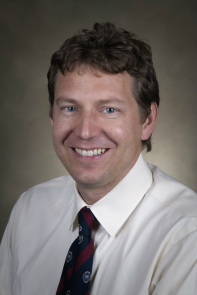TUSCALOOSA, Ala. — More flies are caught with honey than vinegar.
The saying is often used as advice for those who struggle to connect with others, and one University of Alabama professor is using that mantra to counsel troubled youth in Birmingham.

Partnered with the Alabama Department of Youth Services, Dr. Randy Salekin, UA professor of psychology, has led a team of graduate students in implementing positive psychology interventions with more than 70 boys – ages 12 to 18 – per week since spring.
Salekin and his team have developed a system that combines science education, technology and positive psychology as well as positive reinforcement that he says has been more effective at reaching troubled youth at the facility than typical methods, like empathy training or strict discipline.
The treatments were tested at UA’s Disruptive Behavior Clinic ahead of Salekin’s partnership with DYS.
“Because, in general, the principles were well tested in other interventions, we were on solid footing putting this particular combination of intervention techniques together for the youth at DYS,” Salekin said. “This is the next logical step in a set of empirically-validated treatment studies to further advance treatment for children with callous emotional traits and conduct disorders.”
The teens and pre-teens Salekin and his staff treat have a variety of issues, like oppositional defiance or conduct disorder. Some of the children are in gangs and have experienced traumatic incidents at home. Some have committed crimes. And while each case is different, children in the custody of DYS are there because of serious criminal or behavioral issues.
“These kids come into the system, and they’re having tough times, but they seem to look really hopeful and full of excitement when the treatment starts,” Salekin said. “I think they make significant gains in the facility, based on our reports from staff once they are in treatment. We’re looking to see if their developmental maturity has improved and if they have more cognitive and emotional control in instances when they feel disrespected or slighted. Staff ratings have confirmed a great deal of benefit.
“We’re not able to go into the community to see what happens, and there’s no easy solution for the transition from the facility to the community. But, we are able to see what happens in the facility when we’re not there, and the kids are making substantial gains.”
Salekin’s first approach is to pique the children’s interest in learning about themselves and specifically about their brains, lessening the initial focus on what they’re doing wrong and why they shouldn’t do it again, but scientifically explaining the mechanics of the brain that lead to them acting impulsively and irrationally. Salekin uses a laptop computer and LCD player to explain brain plasticity and how they can help regulate emotions while their brain continues to develop.
The positive aspect to the message is “there’s something I can do about this,” said Salekin.
“It gives them a tremendous amount of confidence,” said Salekin. “Their eyes are wide open at that point.”
Similar training was given to the staff, which went through a five-day workshop where biological explanations were given for oppositionality and lack of maturity. The staff was encouraged to reinforce positive behaviors and to not be as punitive about minor issues.
“They responded favorably,” Salekin said. “It’s nice to know the staff is on board with this general plan.”
Once the biology aspect is covered, children are encouraged to form a five-component plan aimed at improving relationships with friends and loved ones. Other components are aimed at education, career and athletics, with the common thread being “improvement.”
Salekin and his staff anticipated positive results in Birmingham after implementing similar methods in the Disruptive Behavior/Disorder Clinic in McMillan Hall’s Psychology Clinic at UA. The on-campus clinic, which takes community and court referrals for children as young as four and as old as 17, adapted methods created after consultations with other psychologists in Pennsylvania and Massachusetts.
“People are applying positive interventions to adults, college kids and depressed patients, but, to our knowledge, no one has ever done this with oppositional defiant kids or kids with conduct disorder with callous unemotional traits,” Salekin said.
“The tricky balance: I don’t think anyone has done it with the hopes of changing behavior with disruptive youth. It’s always a well-being focus, like encouraging people to take better care of themselves. With kids, that is normally an easy sell. It would have to be hooked together with components like studying the brain, making plans, and following through with the plans.
“A lot of current treatments are focused on parent training,” Salekin said. “That does count for a lot of the variance in improvement. Kids in detention facilities, however, do not have as much access to their parents, and it is difficult to make this connection because they are frequently unreachable. So, you have to work from the inside out hoping that the kids can help change the parenting practices when they return home after they have made their own personal gains.”
Contact
David Miller, media relations, 205/348-0825, dcmiller2@ur.ua.edu
Source
Dr. Randy Salekin, professor of psychology, 205/348-6619, rsalekin@bama.ua.edu